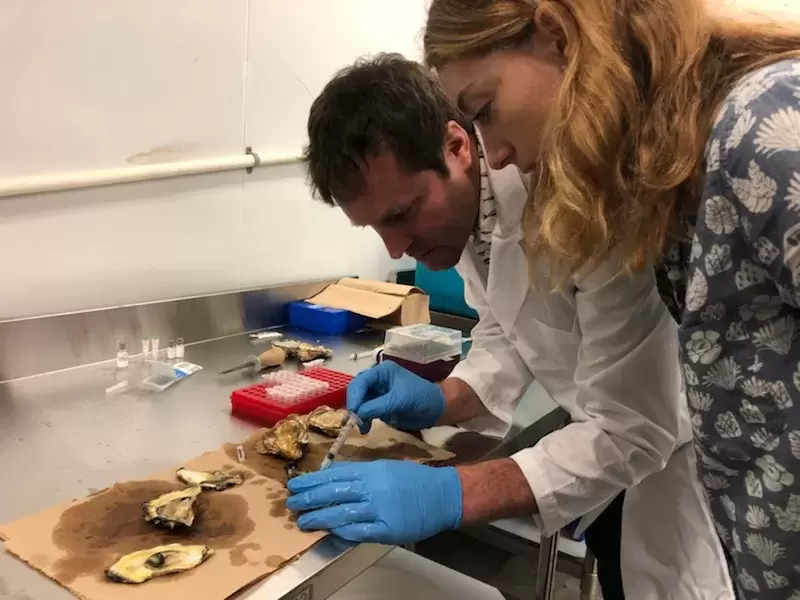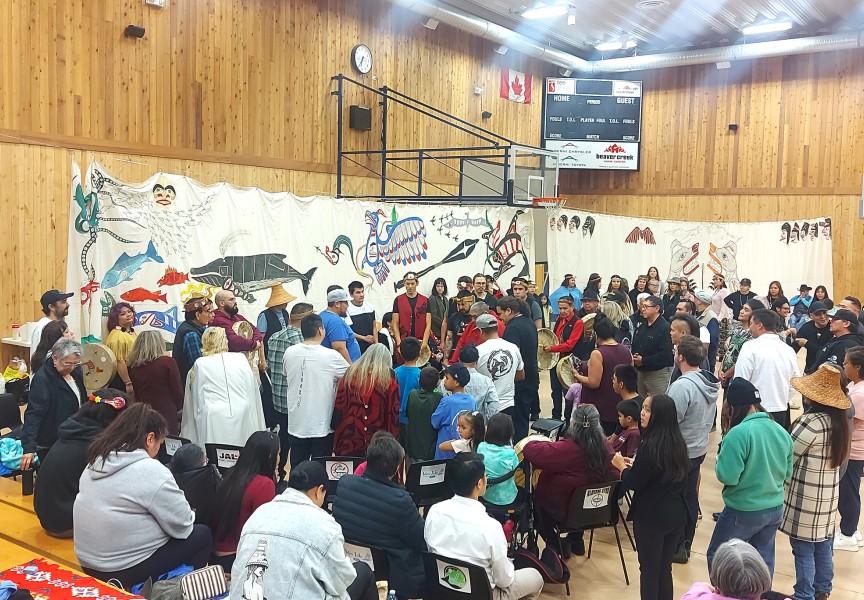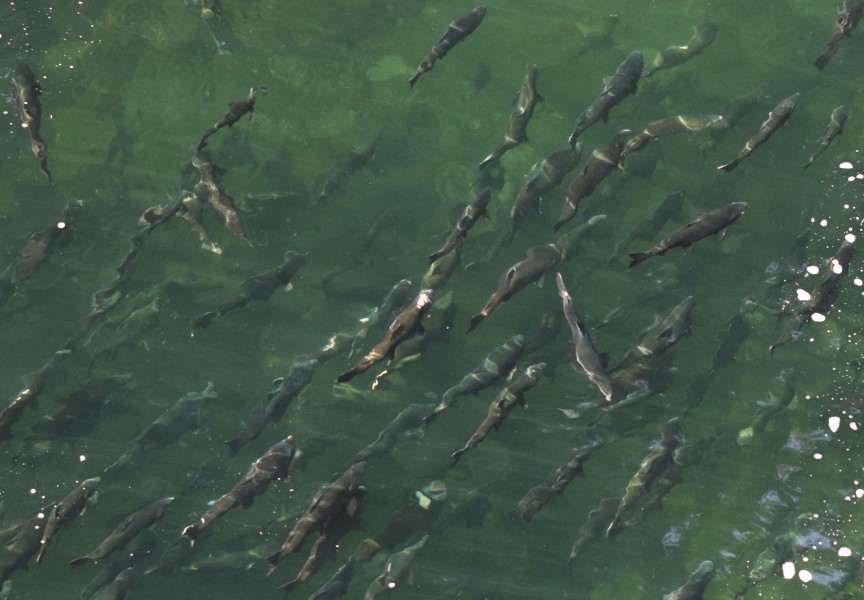With chinook stocks in collapse, a provincially funded fish-health research centre opening in Nanaimo is urgently needed by communities hoping to rebuild their struggling fisheries.
Promising that coastal communities will benefit from a new Centre for Innovation in Fish Health at Vancouver Island University, the B.C. government announced its partnership in the research facility earlier this month.
“Our coastal communities depend on healthy fish stocks for their economic, social and spiritual well-being. For too long, the necessary investments and protections required to ensure the long-term viability of this precious resource have been neglected,” said Melanie Mark, minister of Advanced Education, Skills and Training. The new centre at VIU will help ensure fisheries are viable and prosperous for future generations, she added.
An initial investment was made of $215,000 for equipment and renovations at the centre to “help kick-start a strategic partnership with Indigenous communities, industry, not-for-profit groups and the educational sector,” the ministry said.
A VIU spokeswoman said the province took the lead and the university expects to see additional funding from other sources as the centre develops.
Expected to open in the fall, the lab is designed to meet Canadian Food Inspection Agency standards at a biosecurity level for aquatic animals above the standard available at Pacific Biological Station in Nanaimo. As such it will the only one of its kind on the West Coast capable of research in a range of diseases affecting fish in B.C. waters at a time when demand for lab analysis exceeds capacity. It should also bring research to the West that would otherwise go to the East Coast.
Jared Dick, NTC’s central region biologist, said the new lab is good timing considering the immediate need for disease screening along the west coast as the Canadian government rolls out aquaculture plans. The $105-million Salmon Restoration and Innovation Fund, a joint federal-provincial initiative, was announced in December.
“Pathogenic screening hasn’t really been done in my area, Area 24, Clayoquot Sound,” Dick said.
Chinook stocks, found in six rivers in the sound, are of greatest concern due to steeply declining numbers and importance to coastal First Nations. Stocks in the Megin and Moyeha rivers are on the verge of being lost entirely.
Uu-a-thluk (“taking care of,” the Nuu-chah-nulth name for NTC Fisheries) is engaged in biological detective work to gain a better understanding of what’s causing juvenile chinook mortality in Clayoquot Sound. Research is required to determine aquaculture strategies and shine a light on potential impacts from sea-pen fish farming in the sound. Fish have been sampled in the river and estuary, but more testing is needed in saltwater, looking at how juveniles — mostly chinook but also coho and chum — are faring.
Uu-a-thluk is developing a project for the Bedwell River in Ahousaht territory and awaits confirmation of funding through an endowment fund, Dick said. The river, which flows into Bedwell Sound, produces an average of 100 returning adult chinook but has dipped well below that in recent years. In the 1940s and 1950s returns from the river were much higher, exceeding 400 adult chinook in many years, according to Uu-a-thluk.
Multiple causes — overfishing, poaching, incidental catches and habitat degradation from logging — have been blamed for the collapse of the chinook fishery after it peaked in the 1950s. Fishing fleets remain a fraction of what they once were with additional restrictions looming over orca conservation.
Salmon farming remains a question mark in terms of its impact on wild salmon, a question that needs to be answered one way or another, Dick noted. Elevated levels of sea lice on juveniles as they leave freshwater is an obvious concern as are other parasites and diseases. A better informed assessment of the disease risks tied to salmon farming will undoubtedly help to determine the future of aquaculture in Clayoquot Sound.
Ahousaht Fisheries Manager Luke Swan thinks the VIU lab could be an asset, particularly in cases where farmed salmon escape and mingle with wild fish. Last year, 300,000 escaped when a pen collapsed in Washington State.
Andrew Jackson, Tlo-o-qui-aht fisheries manager, said the lab’s services can only be an advantage.
“When we have a problem, we do send (samples) to the biological station, but what I’ve heard is that this is more advanced than the biological station,” he said. “I think it’s certainly a benefit. If anything happens at the fish farms, we can always find out about it from an independent third party.”
This could help in matters possibly involving litigation through the courts, he said.
Tl-o-qui-aht has no Atlantic salmon farms in its territory, but there are four or five active chinook salmon farms. As well, TFN has an ongoing concern over fish waste effluent dumped by local fish processing facilities. Lions Gate Fisheries stopped dumping solids but still deposits fish blood into Tofino harbour, Jackson said. Like many others, Jackson would like to see that stopped and sea-pen fish farming halted on the Island’s west coast.
The director of lands and resources for Ka:'yu:'k't'h'/Che:k'tles7et'h' First Nations said habitat destruction, not disease, is the No. 1 issue from where he stands.
“Forestry practices have done a lot of damage to the runs with all the debris that’s washed down,” Tony Hanson said.
He believes companies cut trees too close to fish-bearing streams and leave behind too much waste. Combined with extreme weather events brought by climate change, this contributes to erosion and washouts that destroy the clean gravel substrate critical to spawning.
“Tahsis River is the worst,” Hanson said. “They clear-cut the top end and left a path for the water to come straight down.”
Some of the salmon stocks in the area are only now recovering from clear-cut logging decades ago. The local chum fishery is in its second year of limited openings of two or three days a week.
Hanson is hoping that fish habitat issues can be brought to the table through negotiations with the B.C. government and logging companies.
Like Tla-o-qui-aht, Ka:'yu:'k't'h'/Che:k'tles7et'h' is among west coast First Nations that don’t have Atlantic salmon farms operating within their territories. There is a sablefish farm in their waters, but the groundfish operation is not subject to the same disease concerns as farmed Atlantic salmon, Hanson said.







